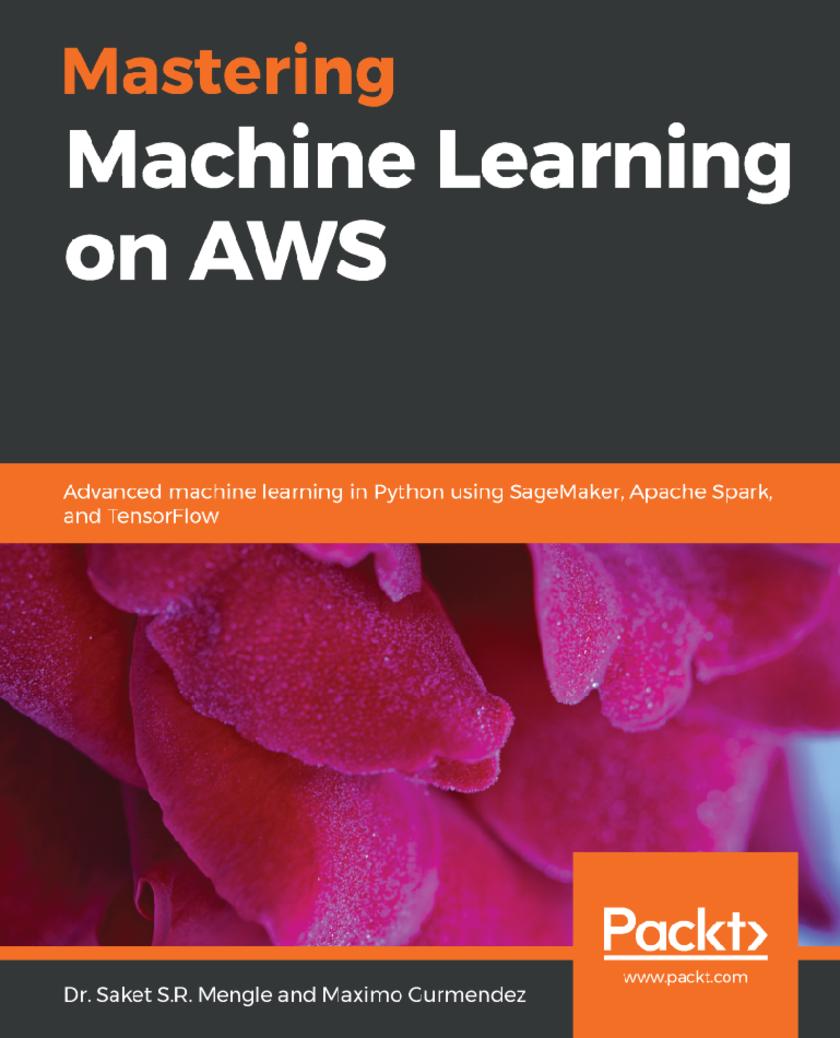
Mastering Machine Learning on AWS
¥62.12
Gain expertise in ML techniques with AWS to create interactive apps using SageMaker, Apache Spark, and TensorFlow. Key Features * Build machine learning apps on Amazon Web Services (AWS) using SageMaker, Apache Spark and TensorFlow * Learn model optimization, and understand how to scale your models using simple and secure APIs * Develop, train, tune and deploy neural network models to accelerate model performance in the cloud Book Description AWS is constantly driving new innovations that empower data scientists to explore a variety of machine learning (ML) cloud services. This book is your comprehensive reference for learning and implementing advanced ML algorithms in AWS cloud. As you go through the chapters, you’ll gain insights into how these algorithms can be trained, tuned and deployed in AWS using Apache Spark on Elastic Map Reduce (EMR), SageMaker, and TensorFlow. While you focus on algorithms such as XGBoost, linear models, factorization machines, and deep nets, the book will also provide you with an overview of AWS as well as detailed practical applications that will help you solve real-world problems. Every practical application includes a series of companion notebooks with all the necessary code to run on AWS. In the next few chapters, you will learn to use SageMaker and EMR Notebooks to perform a range of tasks, right from smart analytics, and predictive modeling, through to sentiment analysis. By the end of this book, you will be equipped with the skills you need to effectively handle machine learning projects and implement and evaluate algorithms on AWS. What you will learn * Manage AI workflows by using AWS cloud to deploy services that feed smart data products * Use SageMaker services to create recommendation models * Scale model training and deployment using Apache Spark on EMR * Understand how to cluster big data through EMR and seamlessly integrate it with SageMaker * Build deep learning models on AWS using TensorFlow and deploy them as services * Enhance your apps by combining Apache Spark and Amazon SageMaker Who this book is for This book is for data scientists, machine learning developers, deep learning enthusiasts and AWS users who want to build advanced models and smart applications on the cloud using AWS and its integration services. Some understanding of machine learning concepts, Python programming and AWS will be beneficial.
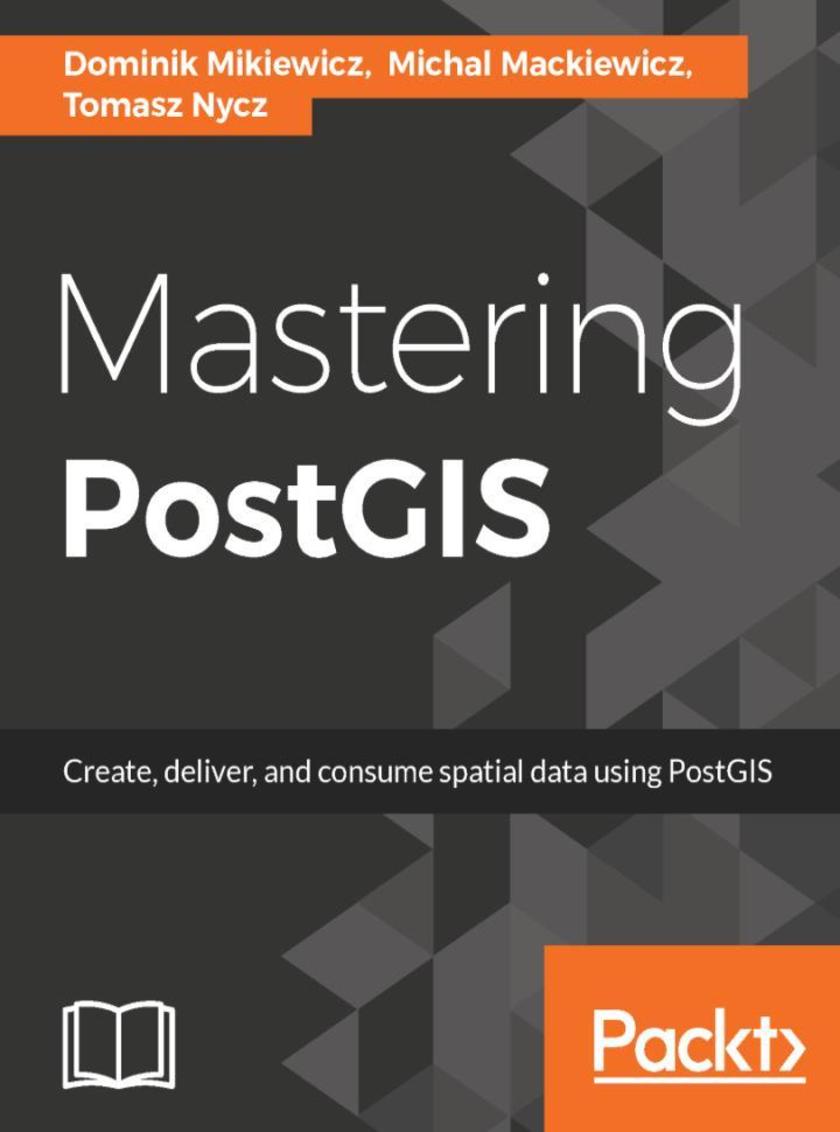
Mastering PostGIS
¥62.12
Write efficient GIS applications using PostGIS - from data creation to data consumption About This Book ? Learn how you can use PostGIS for spatial data analysis and manipulation ? Optimize your queries and build custom functionalities for your GIS application ? A comprehensive guide with hands-on examples to help you master PostGIS with ease Who This Book Is For If you are a GIS developer or analyst who wants to master PostGIS to build efficient, scalable GIS applications, this book is for you. If you want to conduct advanced analysis of spatial data, this book will also help you. The book assumes that you have a working installation of PostGIS in place, and have working experience with PostgreSQL. What You Will Learn ? Refresh your knowledge of the PostGIS concepts and spatial databases ? Solve spatial problems with the use of SQL in real-world scenarios ? Practical walkthroughs of application development examples using Postgis, GeoServer and OpenLayers. ? Extract, transform and load your spatial data ? Expose data directly or through web services. ? Consume your data in both desktop and web clients In Detail PostGIS is open source extension onf PostgreSQL object-relational database system that allows GIS objects to be stored and allows querying for information and location services. The aim of this book is to help you master the functionalities offered by PostGIS- from data creation, analysis and output, to ETL and live edits. The book begins with an overview of the key concepts related to spatial database systems and how it applies to Spatial RMDS. You will learn to load different formats into your Postgres instance, investigate the spatial nature of your raster data, and finally export it using built-in functionalities or 3th party tools for backup or representational purposes. Through the course of this book, you will be presented with many examples on how to interact with the database using JavaScript and Node.js. Sample web-based applications interacting with backend PostGIS will also be presented throughout the book, so you can get comfortable with the modern ways of consuming and modifying your spatial data. Style and approach This book is a comprehensive guide covering all the concepts you need to master PostGIS. Packed with hands-on examples, tips and tricks, even the most advanced concepts are explained in a very easy-to-follow manner. Every chapter in the book does not only focus on how each task is performed, but also why.
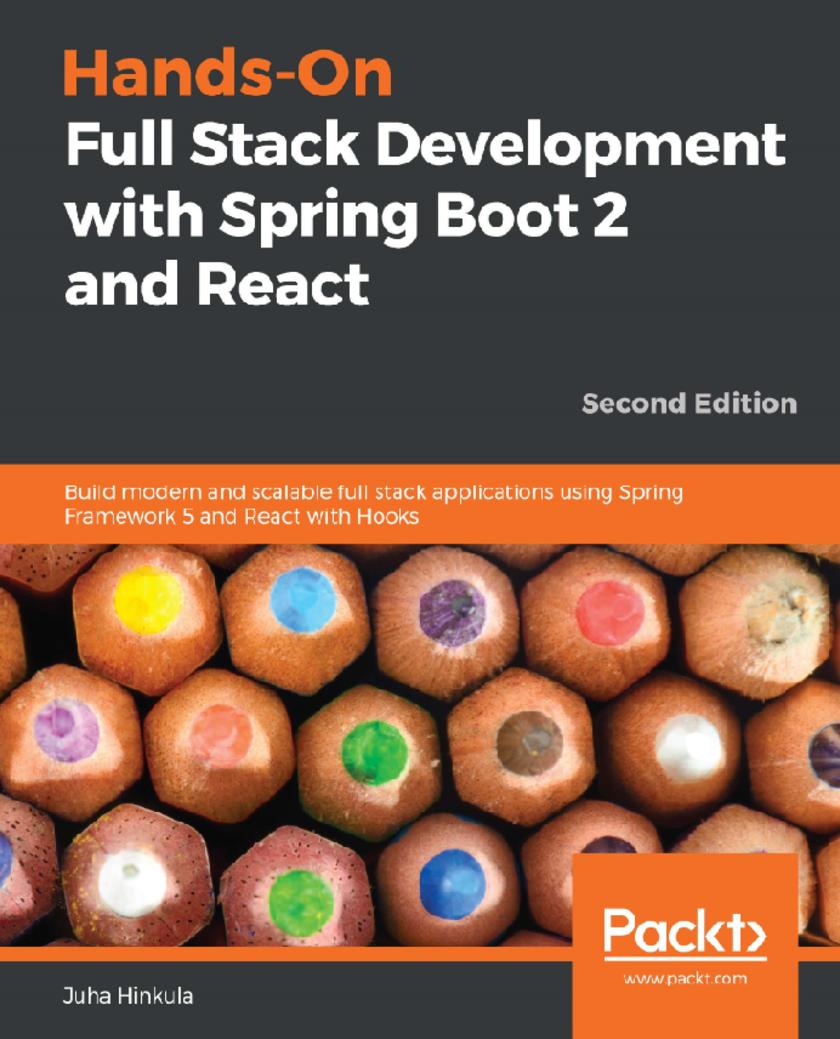
Hands-On Full Stack Development with Spring Boot 2 and React
¥62.12
A comprehensive guide to building full stack applications covering frontend and server-side programming, data management, and web security Key Features * Unleash the power of React Hooks to build interactive and complex user interfaces * Build scalable full stack applications designed to meet demands of modern users * Understand how the Axios library simplifies CRUD operations Book Description React Hooks have changed the way React components are coded. They enable you to write components in a more intuitive way without using classes, which makes your code easier to read and maintain. Building on from the previous edition, this book is updated with React Hooks and the latest changes introduced in create-react-app and Spring Boot 2.1. This book starts with a brief introduction to Spring Boot. You’ll understand how to use dependency injection and work with the data access layer of Spring using Hibernate as the ORM tool. You’ll then learn how to build your own RESTful API endpoints for web applications. As you advance, the book introduces you to other Spring components, such as Spring Security to help you secure the backend. Moving on, you’ll explore React and its app development environment and components for building your frontend. Finally, you’ll create a Docker container for your application by implementing the best practices that underpin professional full stack web development. By the end of this book, you’ll be equipped with all the knowledge you need to build modern full stack applications with Spring Boot for the backend and React for the frontend. What you will learn * Create a RESTful web service with Spring Boot * Grasp the fundamentals of dependency injection and how to use it for backend development * Discover techniques for securing the backend using Spring Security * Understand how to use React for frontend programming * Benefit from the Heroku cloud server by deploying your application to it * Delve into the techniques for creating unit tests using JUnit * Explore the Material UI component library to make more user-friendly user interfaces Who this book is for If you are a Java developer familiar with Spring, but are new to building full stack applications, this is the book for you.
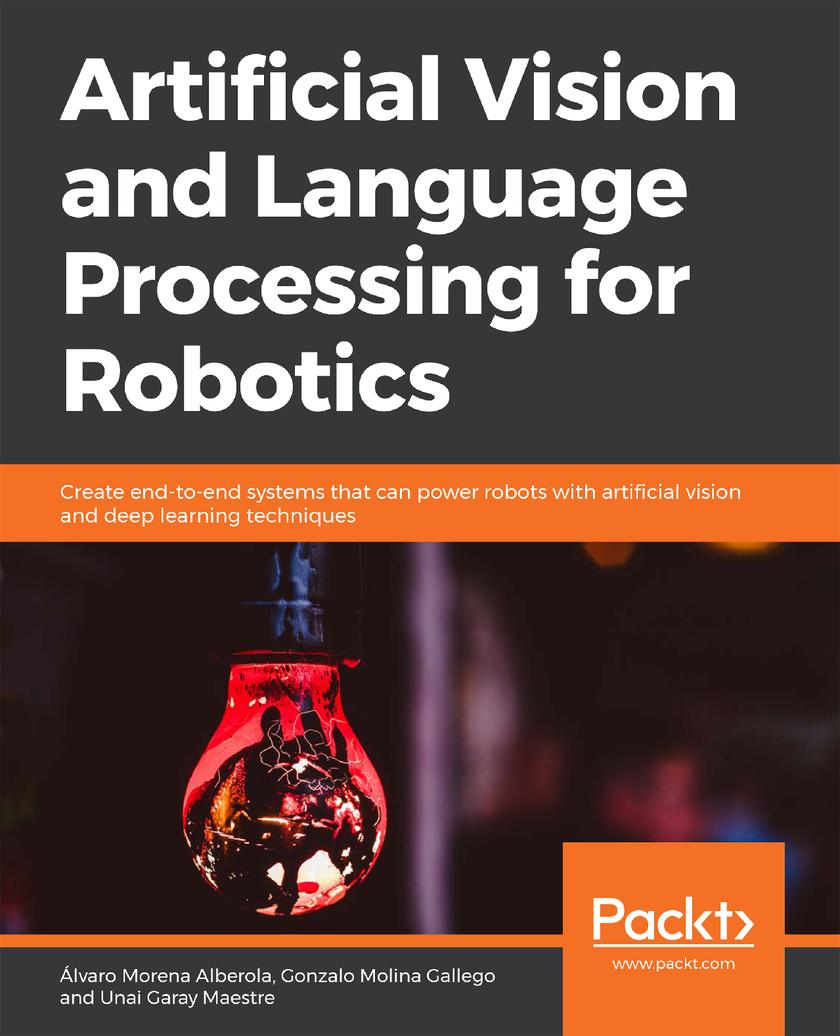
Artificial Vision and Language Processing for Robotics
¥62.12
Create end-to-end systems that can power robots with artificial vision and deep learning techniques Key Features * Study ROS, the main development framework for robotics, in detail * Learn all about convolutional neural networks, recurrent neural networks, and robotics * Create a chatbot to interact with the robot Book Description Artificial Vision and Language Processing for Robotics begins by discussing the theory behind robots. You'll compare different methods used to work with robots and explore computer vision, its algorithms, and limits. You'll then learn how to control the robot with natural language processing commands. You'll study Word2Vec and GloVe embedding techniques, non-numeric data, recurrent neural network (RNNs), and their advanced models. You'll create a simple Word2Vec model with Keras, as well as build a convolutional neural network (CNN) and improve it with data augmentation and transfer learning. You'll study the ROS and build a conversational agent to manage your robot. You'll also integrate your agent with the ROS and convert an image to text and text to speech. You'll learn to build an object recognition system using a video. By the end of this book, you'll have the skills you need to build a functional application that can integrate with a ROS to extract useful information about your environment. What you will learn * Explore the ROS and build a basic robotic system * Understand the architecture of neural networks * Identify conversation intents with NLP techniques * Learn and use the embedding with Word2Vec and GloVe * Build a basic CNN and improve it using generative models * Use deep learning to implement artificial intelligence(AI)and object recognition * Develop a simple object recognition system using CNNs * Integrate AI with ROS to enable your robot to recognize objects Who this book is for Artificial Vision and Language Processing for Robotics is for robotics engineers who want to learn how to integrate computer vision and deep learning techniques to create complete robotic systems. It will prove beneficial to you if you have working knowledge of Python and a background in deep learning. Knowledge of the ROS is a plus.
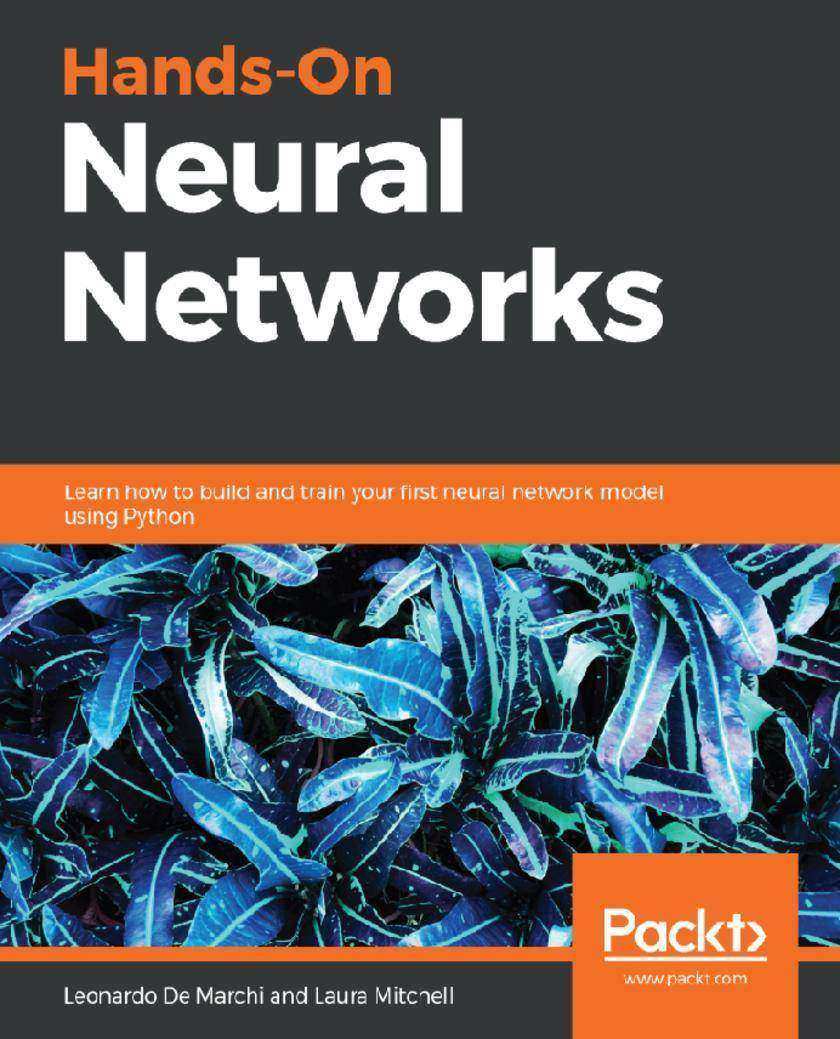
Hands-On Neural Networks
¥62.12
Design and create neural networks with deep learning and artificial intelligence principles using OpenAI Gym, TensorFlow, and Keras Key Features * Explore neural network architecture and understand how it functions * Learn algorithms to solve common problems using back propagation and perceptrons * Understand how to apply neural networks to applications with the help of useful illustrations Book Description Neural networks play a very important role in deep learning and artificial intelligence (AI), with applications in a wide variety of domains, right from medical diagnosis, to financial forecasting, and even machine diagnostics. Hands-On Neural Networks is designed to guide you through learning about neural networks in a practical way. The book will get you started by giving you a brief introduction to perceptron networks. You will then gain insights into machine learning and also understand what the future of AI could look like. Next, you will study how embeddings can be used to process textual data and the role of long short-term memory networks (LSTMs) in helping you solve common natural language processing (NLP) problems. The later chapters will demonstrate how you can implement advanced concepts including transfer learning, generative adversarial networks (GANs), autoencoders, and reinforcement learning. Finally, you can look forward to further content on the latest advancements in the field of neural networks. By the end of this book, you will have the skills you need to build, train, and optimize your own neural network model that can be used to provide predictable solutions. What you will learn * Learn how to train a network by using backpropagation * Discover how to load and transform images for use in neural networks * Study how neural networks can be applied to a varied set of applications * Solve common challenges faced in neural network development * Understand the transfer learning concept to solve tasks using Keras and Visual Geometry Group (VGG) network * Get up to speed with advanced and complex deep learning concepts like LSTMs and NLP * Explore innovative algorithms like GANs and deep reinforcement learning Who this book is for If you are interested in artificial intelligence and deep learning and want to further your skills, then this intermediate-level book is for you. Some knowledge of statistics will help you get the most out of this book.
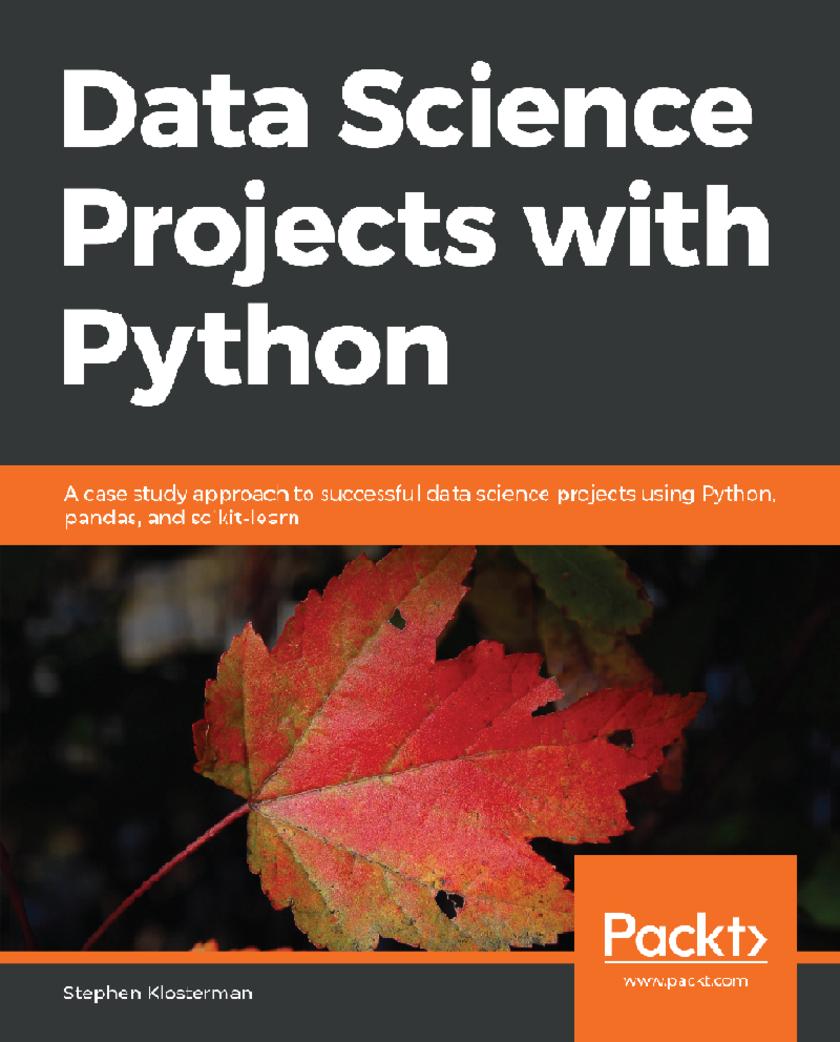
Data Science Projects with Python
¥62.12
Gain hands-on experience with industry-standard data analysis and machine learning tools in Python Key Features * Learn techniques to use data to identify the exact problem to be solved * Visualize data using different graphs * Identify how to select an appropriate algorithm for data extraction Book Description Data Science Projects with Python is designed to give you practical guidance on industry-standard data analysis and machine learning tools in Python, with the help of realistic data. The book will help you understand how you can use pandas and Matplotlib to critically examine a dataset with summary statistics and graphs, and extract the insights you seek to derive. You will continue to build on your knowledge as you learn how to prepare data and feed it to machine learning algorithms, such as regularized logistic regression and random forest, using the scikit-learn package. You’ll discover how to tune the algorithms to provide the best predictions on new and, unseen data. As you delve into later chapters, you’ll be able to understand the working and output of these algorithms and gain insight into not only the predictive capabilities of the models but also their reasons for making these predictions. By the end of this book, you will have the skills you need to confidently use various machine learning algorithms to perform detailed data analysis and extract meaningful insights from unstructured data. What you will learn * Install the required packages to set up a data science coding environment * Load data into a Jupyter Notebook running Python * Use Matplotlib to create data visualizations * Fit a model using scikit-learn * Use lasso and ridge regression to reduce overfitting * Fit and tune a random forest model and compare performance with logistic regression * Create visuals using the output of the Jupyter Notebook Who this book is for If you are a data analyst, data scientist, or a business analyst who wants to get started with using Python and machine learning techniques to analyze data and predict outcomes, this book is for you. Basic knowledge of computer programming and data analytics is a must. Familiarity with mathematical concepts such as algebra and basic statistics will be useful.

Hyperledger Cookbook
¥62.12
Explore the entire Hyperledger blockchain family, including frameworks such as Fabric, Sawtooth, Indy, Burrow, and Iroha; and tools such as Composer, Explorer, and Caliper. Key Features * Plan, design, and create a full-fledged private decentralized application using Hyperledger services * Master the ins and outs of the Hyperledger network using real-world examples * Packed with problem-solution-based recipes to tackle pain areas in the blockchain development cycle Book Description Hyperledger is an open-source project and creates private blockchain applications for a range of domains. This book will be your desk reference as you explore common and not-so-common challenges faced while building blockchain networks using Hyperledger services. We'll work through all Hyperledger platform modules to understand their services and features and build end-to-end blockchain applications using various frameworks and tools supported by Hyperledger. This book's independent, recipe-based approach (packed with real-world examples) will familiarize you with the blockchain development cycle. From modeling a business network to integrating with various tools, you will cover it all. We'll cover common and not-so-common challenges faced in the blockchain life cycle. Later, we'll delve into how we can interact with the Hyperledger Fabric blockchain, covering all the principles you need to master, such as chaincode, smart contracts, and much more. We'll also address the scalability and security issues currently faced in blockchain development. By the end of this book, you will be able to implement each recipe to plan, design, and create a full-fledged, private, decentralized application to meet organizational needs. What you will learn * Create the most popular permissioned blockchain network with Fabric and Composer * Build permissioned and permission-less blockchains using Sawtooth * Utilize built-in Iroha asset/account management with role-based permissions * Implement and run Ethereum smart contracts with Burrow * Get to grips with security and scalability in Hyperledger * Explore and view blockchain data using Hyperledger Explorer * Produce reports containing performance indicators and benchmarks using Caliper Who this book is for This book is for blockchain developers who want to understand how they can apply Hyperledger services in their day-to-day projects. This book uses a recipe-based approach to help you use Hyperledger to build powerful, decentralized autonomous applications. We assume the reader has a basic knowledge of the Blockchain technology and cryptography concepts
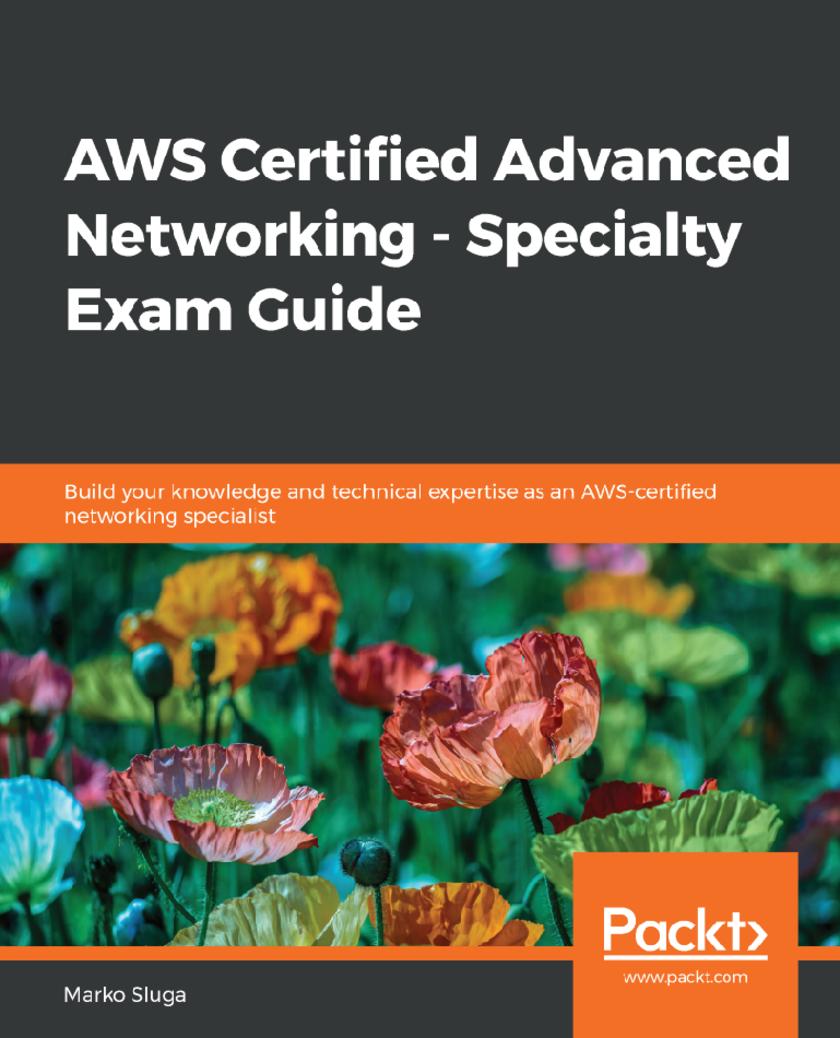
AWS Certified Advanced Networking - Specialty Exam Guide
¥62.12
Develop technical skills and expertise to automate AWS networking tasks Key Features * A fast paced guide that will help you pass the exam with confidence * Learn advanced skill sets to build effective AWS networking solutions * Enhance your AWS skills with practice exercises and mock tests Book Description Amazon has recently come up a with specialty certifications which validates a particular user's expertise that he/she would want to build a career in. Since the Cloud market now demands of AWS networking skills this becomes the most wanted certification to upheld ones industry portfolio. This book would be your ideal companion to getting skilled with complex and creative networking solutions. Cloud practitioners or associate-level certified individuals interested in validating advanced skills in networking can opt for this practical guide. This book will include topics that will help you design and implement AWS and hybrid IT network architectures along with some network automation tasks. You will also delve deep into topics that will help you design and maintain network architecture for all AWS services. Like most of our certification guides this book will also follow a unique approach of testing your learning with chapter-level practice exercises and certification-based mock tests. The exam mock tests will help you gauge whether you are ready to take the certification exam or not. This book will also be an advanced guide for networking professionals to enhance their networking skills and get certified. By the end of this book, you will be all equipped with AWS networking concepts and techniques and will have mastered core architectural best practices. What you will learn * Formulate solution plans and provide guidance on AWS architecture best practices * Design and deploy scalable, highly available, and fault-tolerant systems on AWS * Identify the tools required to replicate an on-premises network in AWS * Analyze the access and egress of data to and from AWS * Select the appropriate AWS service based on data, compute, database, or security requirements * Estimate AWS costs and identify cost control mechanisms Who this book is for If you are a system administrator, or a network engineer interested in getting certified with an advanced Cloud networking certification then this book is for you. Prior experience in Cloud administration and networking would be necessary.
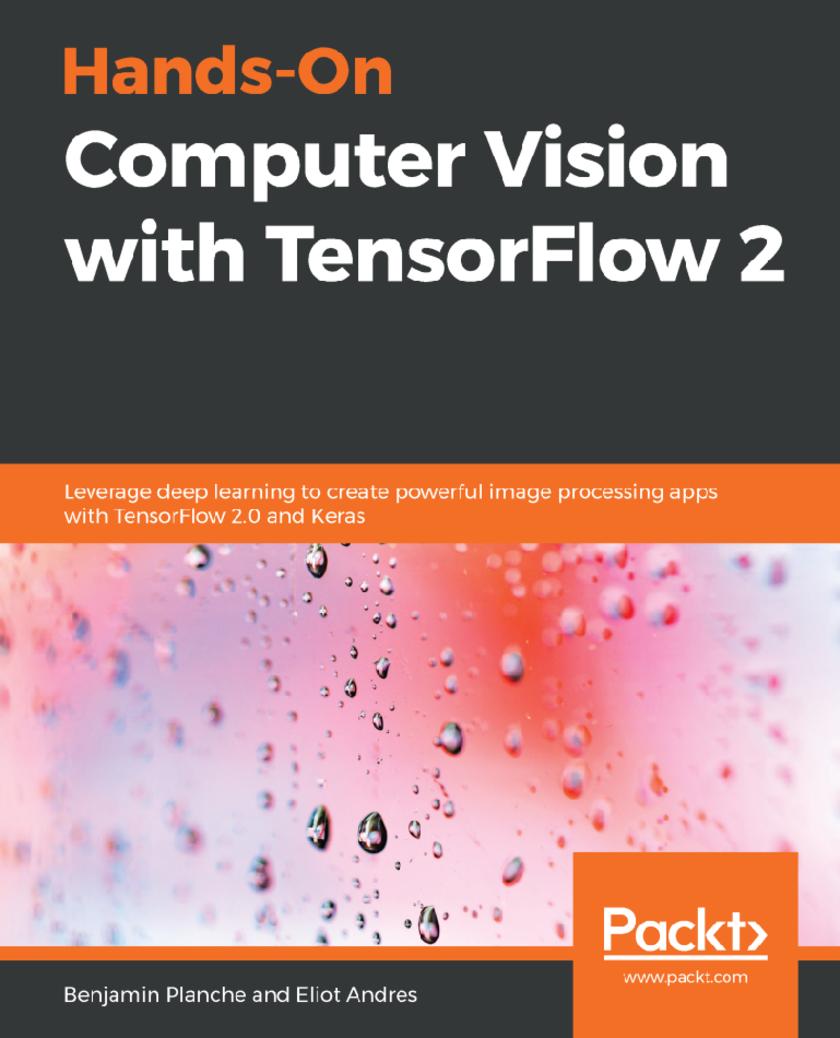
Hands-On Computer Vision with TensorFlow 2
¥62.12
A practical guide to building high performance systems for object detection, segmentation, video processing, smartphone applications, and more. This book is based on the alpha version of TensorFlow 2. Key Features * Discover how to build, train, and serve your own deep neural networks with TensorFlow 2 and Keras * Apply modern solutions to a wide range of applications such as object detection and video analysis * Learn how to run your models on mobile devices and webpages and improve their performance Book Description Computer vision solutions are becoming increasingly common, making their way in fields such as health, automobile, social media, and robotics. This book will help you explore TensorFlow 2, the brand new version of Google's open source framework for machine learning. You will understand how to benefit from using convolutional neural networks (CNNs) for visual tasks. Hands-On Computer Vision with TensorFlow 2 starts with the fundamentals of computer vision and deep learning, teaching you how to build a neural network from scratch. You will discover the features that have made TensorFlow the most widely used AI library, along with its intuitive Keras interface, and move on to building, training, and deploying CNNs efficiently. Complete with concrete code examples, the book demonstrates how to classify images with modern solutions, such as Inception and ResNet, and extract specific content using You Only Look Once (YOLO), Mask R-CNN, and U-Net. You will also build Generative Adversarial Networks (GANs) and Variational Auto-Encoders (VAEs) to create and edit images, and LSTMs to analyze videos. In the process, you will acquire advanced insights into transfer learning, data augmentation, domain adaptation, and mobile and web deployment, among other key concepts. By the end of the book, you will have both the theoretical understanding and practical skills to solve advanced computer vision problems with TensorFlow 2.0. What you will learn * Create your own neural networks from scratch * Classify images with modern architectures including Inception and ResNet * Detect and segment objects in images with YOLO, Mask R-CNN, and U-Net * Tackle problems in developing self-driving cars and facial emotion recognition systems * Boost your application’s performance with transfer learning, GANs, and domain adaptation * Use recurrent neural networks for video analysis * Optimize and deploy your networks on mobile devices and in the browser Who this book is for If you’re new to deep learning and have some background in Python programming and image processing, like reading/writing image files and editing pixels, this book is for you. Even if you’re an expert curious about the new TensorFlow 2 features, you’ll find this book useful. While some theoretical explanations require knowledge in algebra and calculus, the book covers concrete examples for learners focused on practical applications such as visual recognition for self-driving cars and smartphone apps.
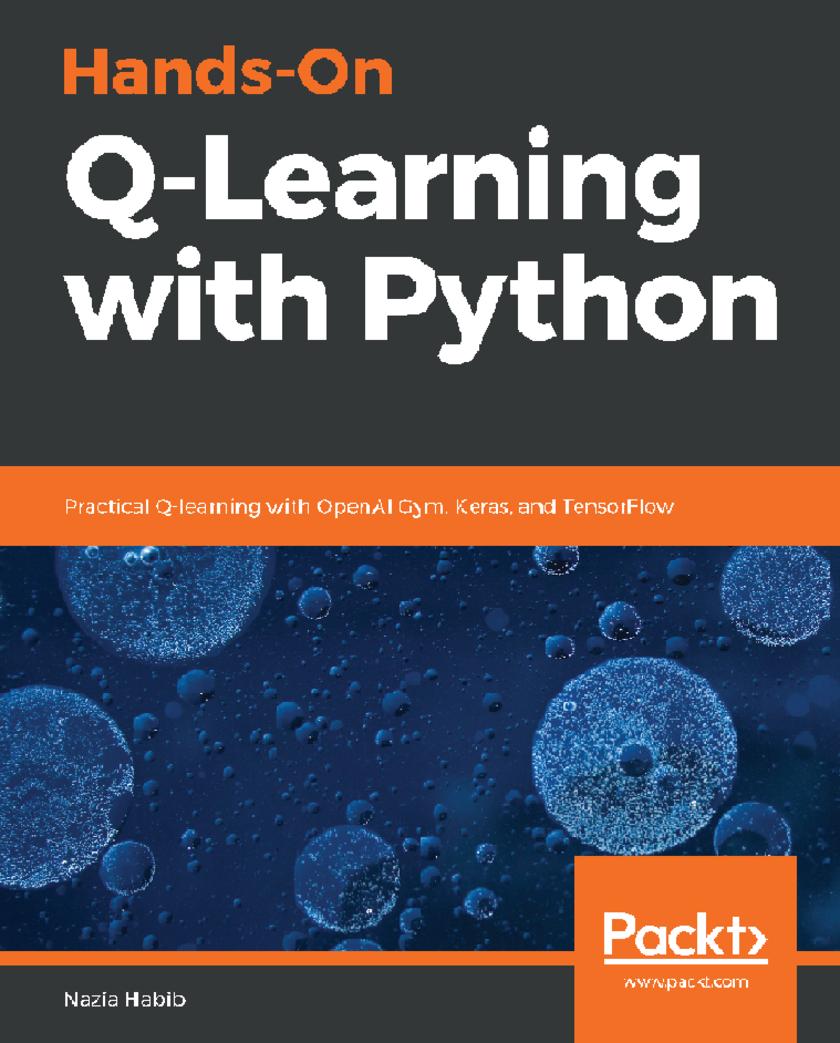
Hands-On Q-Learning with Python
¥62.12
Leverage the power of reward-based training for your deep learning models with Python Key Features * Understand Q-learning algorithms to train neural networks using Markov Decision Process (MDP) * Study practical deep reinforcement learning using Q-Networks * Explore state-based unsupervised learning for machine learning models Book Description Q-learning is a machine learning algorithm used to solve optimization problems in artificial intelligence (AI). It is one of the most popular fields of study among AI researchers. This book starts off by introducing you to reinforcement learning and Q-learning, in addition to helping you get familiar with OpenAI Gym as well as libraries such as Keras and TensorFlow. A few chapters into the book, you will gain insights into modelfree Q-learning and use deep Q-networks and double deep Q-networks to solve complex problems. This book will guide you in exploring use cases such as self-driving vehicles and OpenAI Gym’s CartPole problem. You will also learn how to tune and optimize Q-networks and their hyperparameters. As you progress, you will understand the reinforcement learning approach to solving real-world problems. You will also explore how to use Q-learning and related algorithms in real-world applications such as scientific research. Toward the end, you’ll gain a sense of what’s in store for reinforcement learning. By the end of this book, you will be equipped with the skills you need to solve reinforcement learning problems using Q-learning algorithms with OpenAI Gym, Keras, and TensorFlow. What you will learn * Explore the fundamentals of reinforcement learning and the state-action-reward process * Understand Markov decision processes * Get well versed with libraries such as Keras, and TensorFlow * Create and deploy model-free learning and deep Q-learning agents with TensorFlow, Keras, and OpenAI Gym * Choose and optimize a Q-Network’s learning parameters and fine-tune its performance * Discover real-world applications and use cases of Q-learning Who this book is for If you are a machine learning developer, engineer, or professional who wants to delve into the deep learning approach for a complex environment, then this is the book for you. Proficiency in Python programming and basic understanding of decision-making in reinforcement learning is assumed.
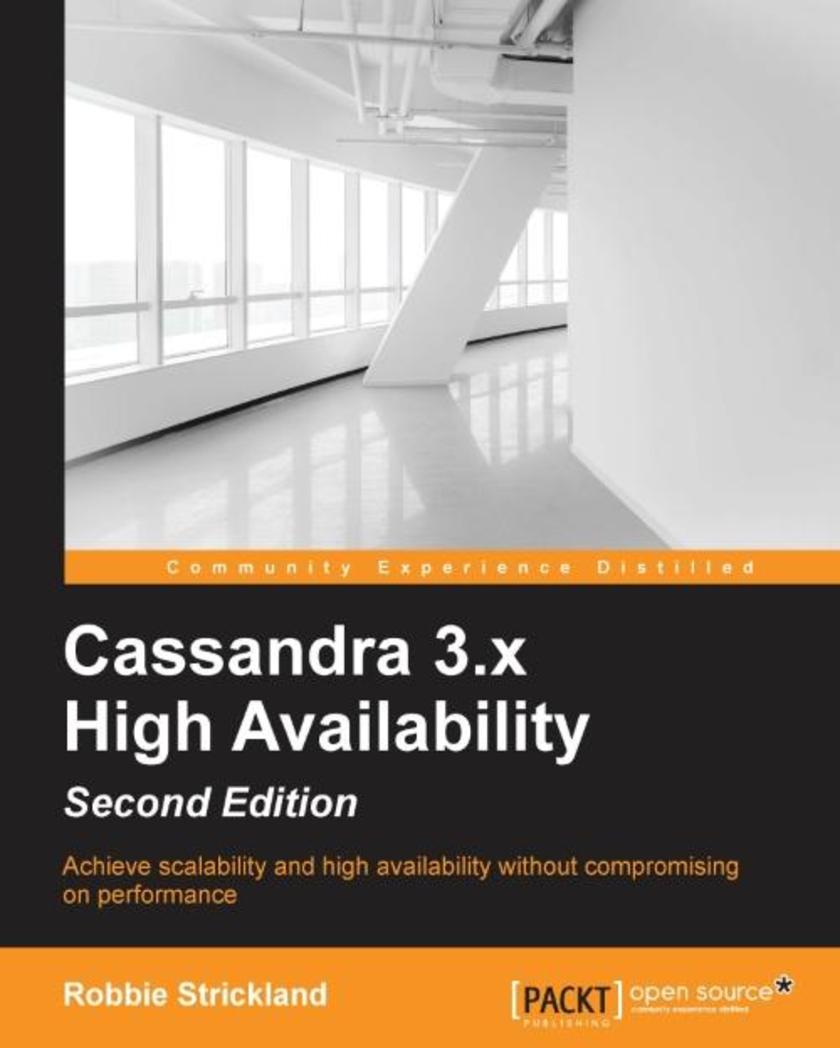
Cassandra 3.x High Availability - Second Edition
¥63.21
Achieve scalability and high availability without compromising on performance About This Book See how to get 100 percent uptime with your Cassandra applications using this easy-follow guide Learn how to avoid common and not-so-common mistakes while working with Cassandra using this highly practical guide Get familiar with the intricacies of working with Cassandra for high availability in your work environment with this go-to-guide Who This Book Is For If you are a developer or DevOps engineer who has basic familiarity with Cassandra and you want to become an expert at creating highly available, fault tolerant systems using Cassandra, this book is for you. What You Will Learn Understand how the core architecture of Cassandra enables highly available applications Use replication and tunable consistency levels to balance consistency, availability, and performance Set up multiple data centers to enable failover, load balancing, and geographic distribution Add capacity to your cluster with zero downtime Take advantage of high availability features in the native driver Create data models that scale well and maximize availability Understand common anti-patterns so you can avoid them Keep your system working well even during failure scenarios In Detail Apache Cassandra is a massively scalable, peer-to-peer database designed for 100 percent uptime, with deployments in the tens of thousands of nodes, all supporting petabytes of data. This book offers a practical insight into building highly available, real-world applications using Apache Cassandra. The book starts with the fundamentals, helping you to understand how Apache Cassandra’s architecture allows it to achieve 100 percent uptime when other systems struggle to do so. You’ll get an excellent understanding of data distribution, replication, and Cassandra’s highly tunable consistency model. Then we take an in-depth look at Cassandra's robust support for multiple data centers, and you’ll see how to scale out a cluster. Next, the book explores the domain of application design, with chapters discussing the native driver and data modeling. Lastly, you’ll find out how to steer clear of common anti-patterns and take advantage of Cassandra’s ability to fail gracefully. Style and approach This practical guide will get you implementing Cassandra right from the design to creating highly available systems. Through a systematic, step-by-step approach, you will learn different aspects of building highly available Cassandra applications and all this with the help of easy-to-follow examples, tips, and tricks.

OpenStack Essentials - Second Edition
¥63.21
Untangle the complexity of OpenStack clouds through this practical tutorial About This Book Navigate through the complex jungle of components in OpenStack using practical instructions This book helps administrators, cloud engineers, and even developers to consolidate and control pools of compute, networking, and storage resources Learn to use the centralized dashboard and administration panel to monitor large-scale deployments Who This Book Is For This book is perfect for administrators, cloud engineers, and operators who want to get started with OpenStack, solve basic problems encountered during deployment, and get up to speed with the latest release of OpenStack. Familiarity with the Linux command line and experience with Linux system administration is expected. What You Will Learn Brush up on the latest release, and how it affects the various components Install OpenStack using the Packstack and RDO Manager installation tool Learn to convert a computer node that supports Docker containers Implement Ceph Block Device images with OpenStack Create and allocate virtual networks, routers and IP addresses to OpenStack Tenants. Configuring and Launching a Docker container. In Detail OpenStack is a widely popular platform for cloud computing. Applications that are built for this platform are resilient to failure and convenient to scale. This book, an update to our extremely popular OpenStack Essentials (published in May 2015) will help you master not only the essential bits, but will also examine the new features of the latest OpenStack release - Mitaka; showcasing how to put them to work straight away. This book begins with the installation and demonstration of the architecture. This book will tech you the core 8 topics of OpenStack. They are Keystone for Identity Management, Glance for Image management, Neutron for network management, Nova for instance management, Cinder for Block storage, Swift for Object storage, Ceilometer for Telemetry and Heat for Orchestration. Further more you will learn about launching and configuring Docker containers and also about scaling them horizontally. You will also learn about monitoring and Troubleshooting OpenStack. Style and approach This book offers step-by-step practical instructions to help you quickly navigate through the complexities of OpenStack

Data Acquisition Using LabVIEW
¥63.21
Transform physical phenomena into computer-acceptable data using a truly object-oriented language About This Book Create your own data acquisition system independently using LabVIEW and build interactive dashboards Collect data using National Instrument's and third-party, open source, affordable hardware Step-by-step real-world examples using various tools that illustrate the fundamentals of data acquisition Who This Book Is For If you are an engineer, scientist, experienced hobbyist, or student, you will highly benefit from the content and examples illustrated in this book. A working knowledge of precision testing, measurement instruments, and electronics, as well as a background in computer fundamentals and programming is expected. What You Will Learn Create a virtual instrument which highlights common functionality of LabVIEW Get familiarized with common buses such as Serial, GPIB, and SCPI commands Staircase signal acquisition using NI-DAQmx Discover how to measure light intensity and distance Master LabVIEW debugging techniques Build a data acquisition application complete with an installer and required drivers Utilize open source microcontroller Arduino and a 32-bit Arduino compatible Uno32 using LabVIEW programming environment In Detail NI LabVIEW's intuitive graphical interface eliminates the steep learning curve associated with text-based languages such as C or C++. LabVIEW is a proven and powerful integrated development environment to interact with measurement and control hardware, analyze data, publish results, and distribute systems. This hands-on tutorial guide helps you harness the power of LabVIEW for data acquisition. This book begins with a quick introduction to LabVIEW, running through the fundamentals of communication and data collection. Then get to grips with the auto-code generation feature of LabVIEW using its GUI interface. You will learn how to use NI-DAQmax Data acquisition VIs, showing how LabVIEW can be used to appropriate a true physical phenomenon (such as temperature, light, and so on) and convert it to an appropriate data type that can be manipulated and analyzed with a computer. You will also learn how to create Distribution Kit for LabVIEW, acquainting yourself with various debugging techniques offered by LabVIEW to help you in situations where bugs are not letting you run your programs as intended. By the end of the book, you will have a clear idea how to build your own data acquisition system independently and much more. Style and approach A hands-on practical guide that starts by laying down the software and hardware foundations necessary for subsequent data acquisition-intensive chapters. The book is packed full of specific examples with software screenshots and schematic diagrams to guide you through the creation of each virtual instrument.
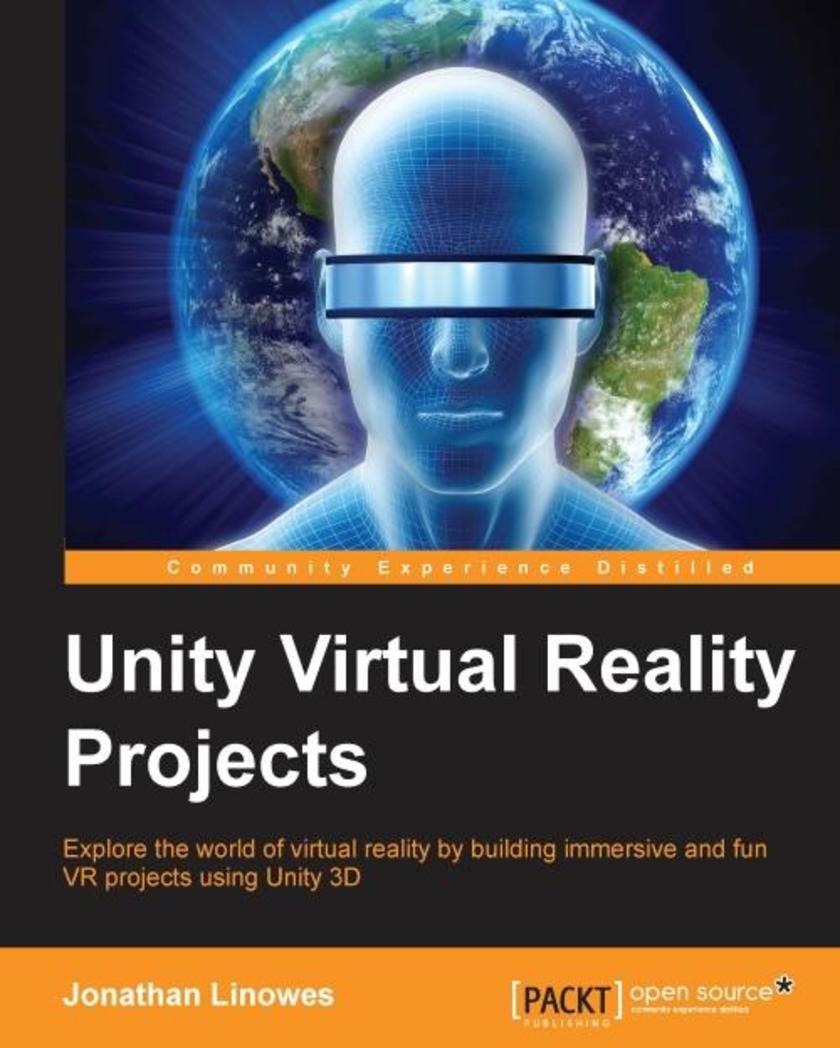
Troubleshooting Puppet
¥63.21
If you are a beginner to intermediate Puppet engineer looking for guidance to help fix problems with your Puppet deployments, this book is for you.
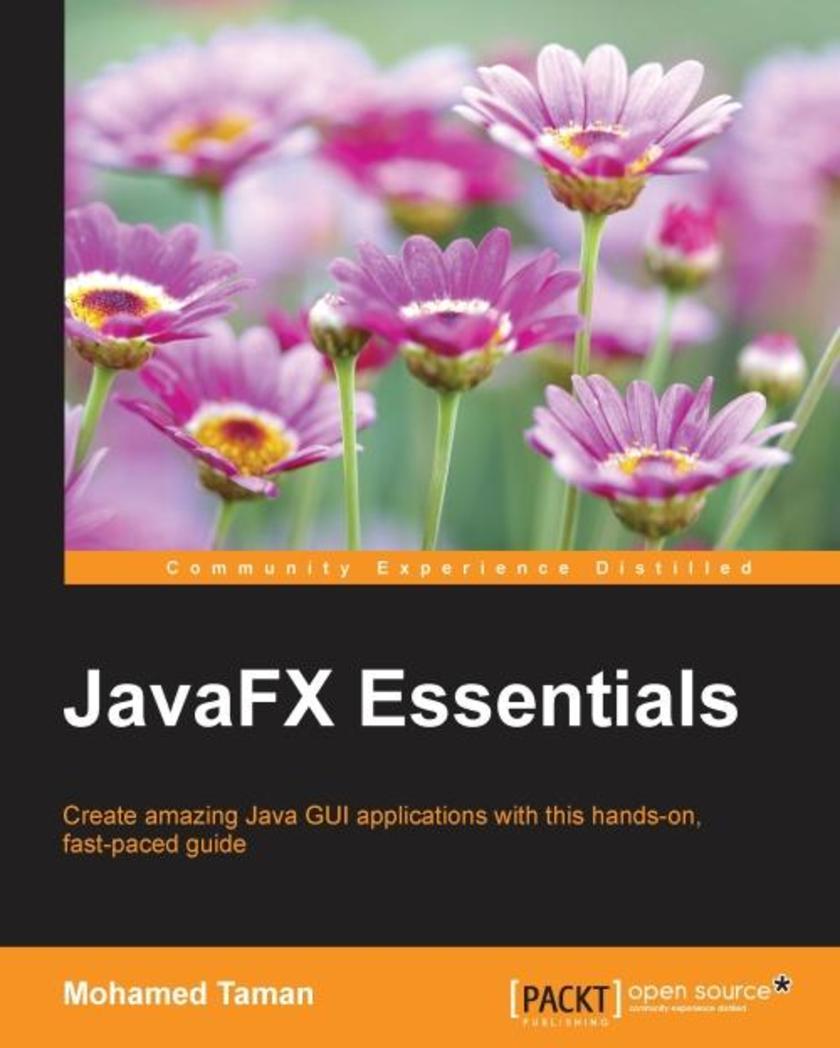
JavaFX Essentials
¥63.21
If you are a Java developer, an experienced Java Swing, Flash/Flex, SWT, or web developer looking to take your client-side applications to the next level, this book is for you.
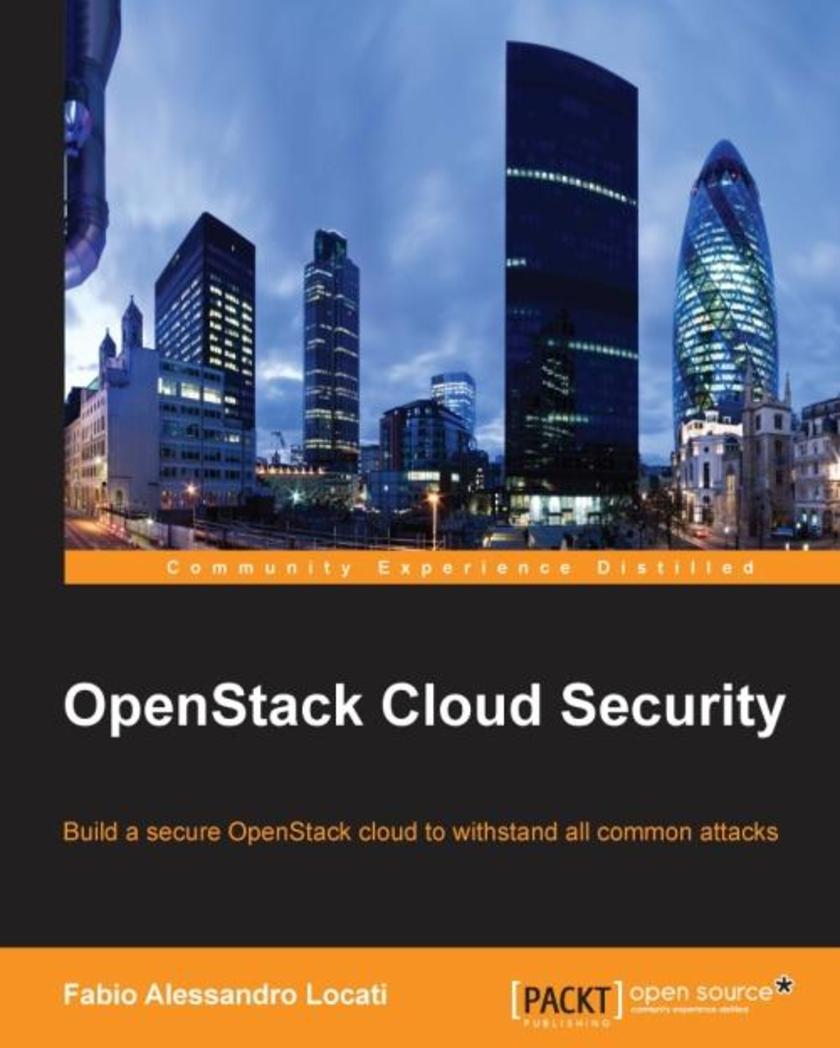
OpenStack Cloud Security
¥63.21
If you are an OpenStack administrator or developer, or wish to build solutions to protect your OpenStack environment, then this book is for you. Experience of Linux administration and familiarity with different OpenStack components is assumed.
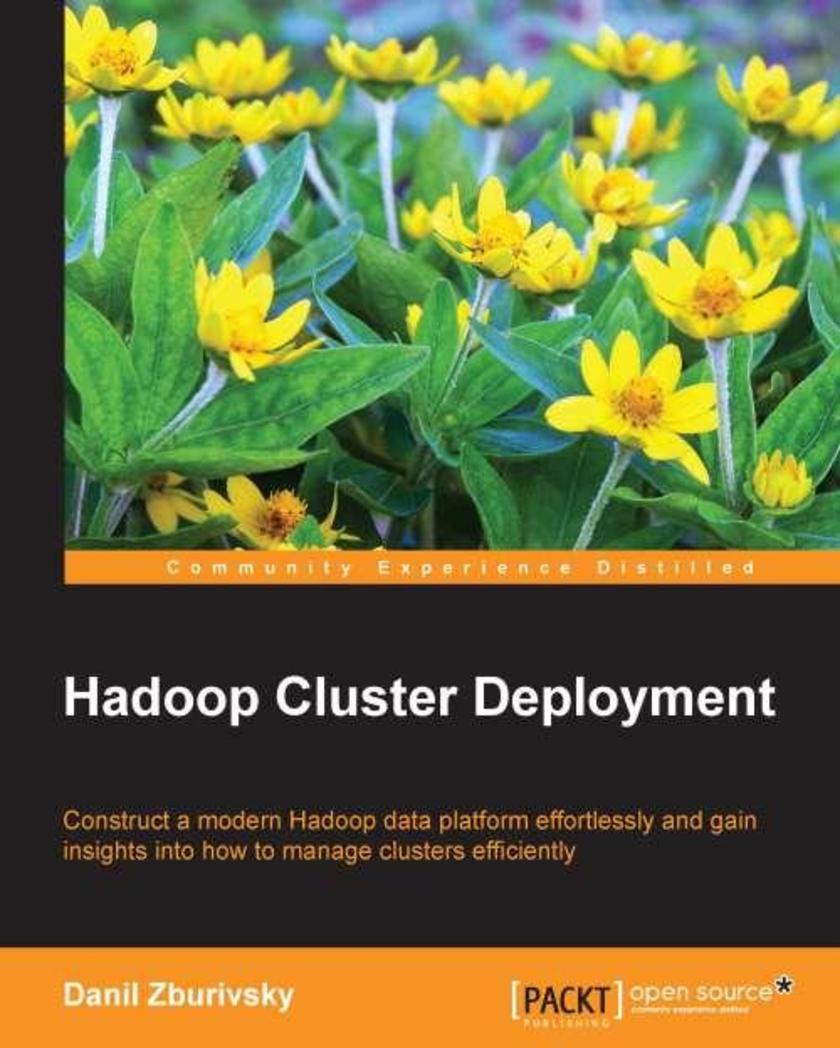
Hadoop Cluster Deployment
¥63.21
This book is a step-by-step tutorial filled with practical examples which will show you how to build and manage a Hadoop cluster along with its intricacies.This book is ideal for database administrators, data engineers, and system administrators, and it will act as an invaluable reference if you are planning to use the Hadoop platform in your organization. It is expected that you have basic Linux skills since all the examples in this book use this operating system. It is also useful if you have access to test hardware or virtual machines to be able to follow the examples in the book.

Learning Bing Maps API
¥63.21
This is a practical, hands-on guide with illustrative examples, which will help you explore the vast universe of Bing maps.If you are a developer who wants to learn how to exploit the numerous features of Bing Maps then this book is ideal for you. It can also be useful for more experienced developers who wish to explore other areas of the APIs. It is assumed that you have some knowledge of JavaScript, HTML, and CSS. For some chapters a working knowledge of .Net and Visual Studio is also needed.

Managing IaaS and DBaaS Clouds with Oracle Enterprise Manager Cloud Control 12c
¥63.21
This book is a step-by-step tutorial filled with practical examples which will show readers how to configure and manage IaaS and DBaaS with Oracle Enterprise Manager.If you are a cloud administrator or a user of self-service provisioning systems offered by Enterprise Manager, this book is ideal for you. It will also help administrators who want to understand the chargeback mechanism offered by Enterprise Manager.An understanding of the basic building blocks of cloud computing such as networking, virtualization, storage, and so on, is needed by those of you interested in this book

JavaScript Regular Expressions
¥63.21
This book is ideal for JavaScript developers and programmers who work with any type of user entry data and want sharpen their skills to become experts.
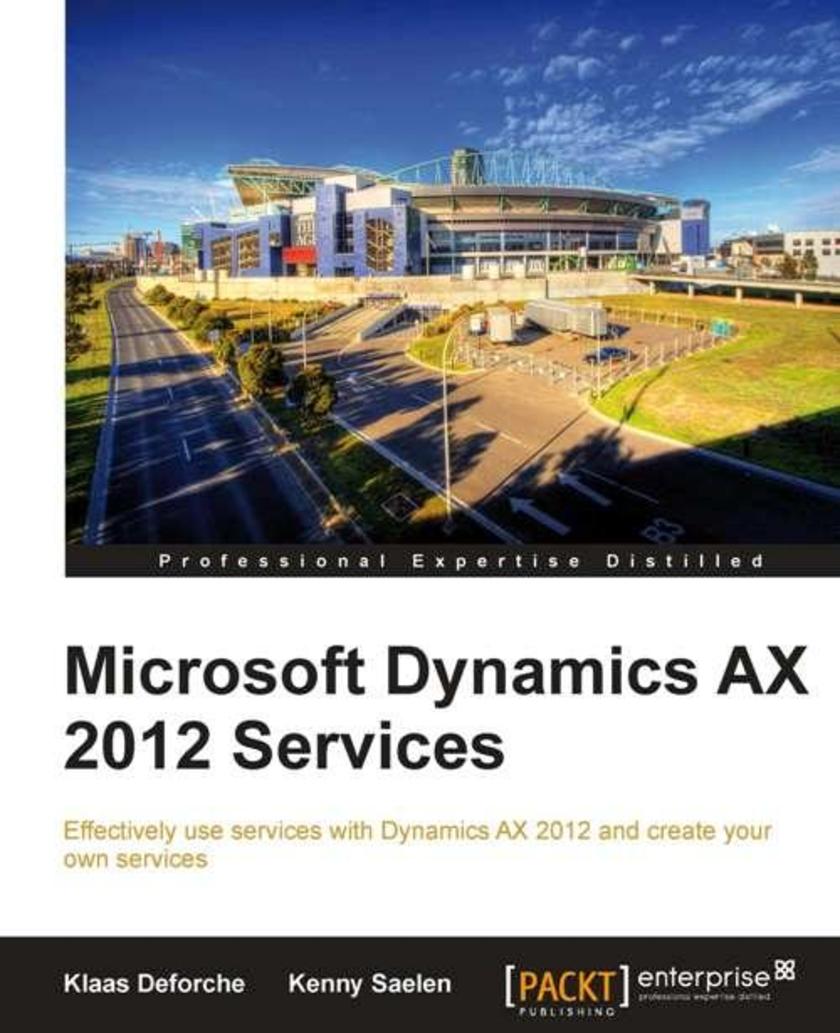
Microsoft Dynamics AX 2012 Services
¥63.21
It's a tutorial guide that provides all the knowledge needed to implement services with Microsoft Dynamics AX 2012. This book is aimed at Dynamics AX developers, both new and experienced with services and Microsoft Dynamics AX 2012. A basic understanding of MorphX and X++ is assumed, but the step-by-step instructions are easy to follow even for beginners. Some examples use C#.NET, so experience with Visual Studio is a plus but not a must.




 购物车
购物车 个人中心
个人中心



